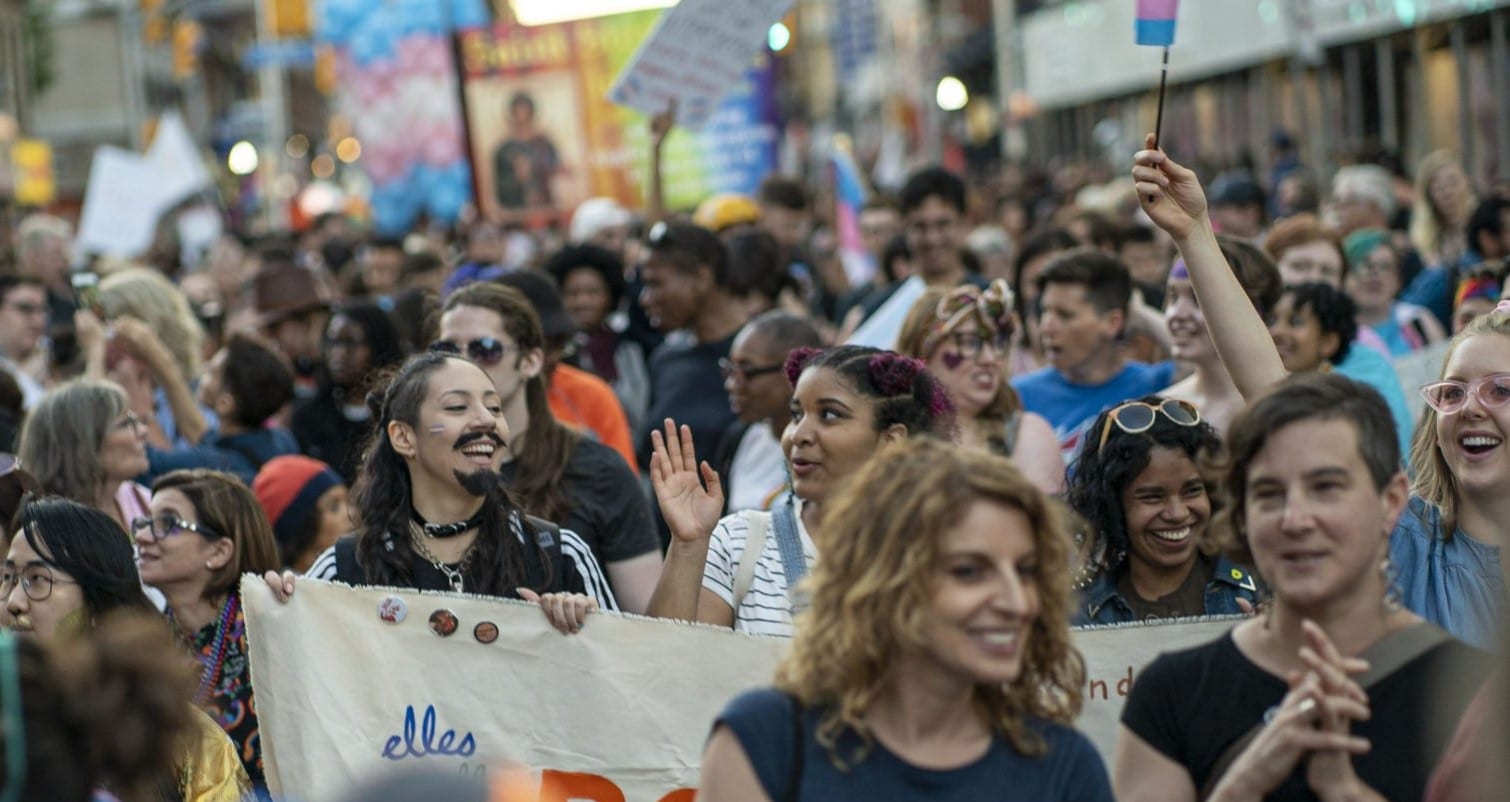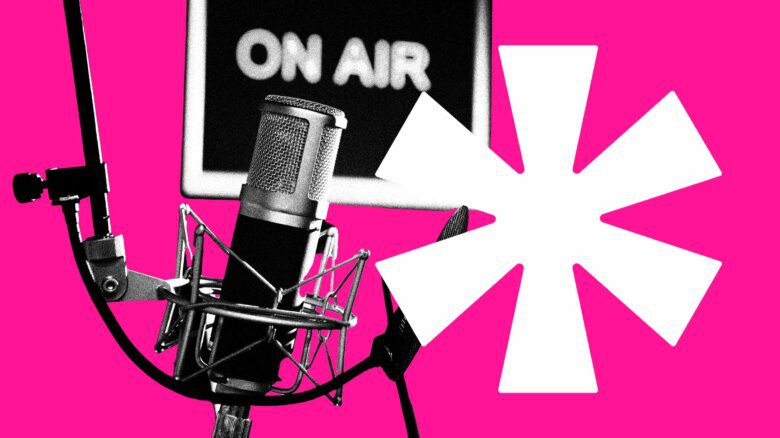In another time, Toronto would be busy kicking off Pride Month. As the humid late days of May give way to the even more humid early days of June, glitter and rainbows would have begun to multiply all over the city. Soon after, every day and night would have offered up something queer—dance parties and poetry readings, comedy shows and family picnics, political panels and drag bingo brunches. At the very end of the month, the climax: A weekend-long street party in the city’s Gay Village drawing millions of revellers, gawkers and everyone in between.
But this year, my local Pride and other Pride festivals in cities and towns around the world have been cancelled, postponed or moved online because of the novel coronavirus pandemic, which has taken nearly 400,000 lives around the world and thrown millions into joblessness, homelessness and despair. And amidst the enduring oppressions and aggressions of white supremacy, a series of violent threats, attacks and killings of Black people in the U.S. and Canada over the past several weeks has devastated communities. Millions are mourning the recent deaths of George Floyd, Breonna Taylor, Tony McDade, Ahmaud Arbery and Regis Korchinski-Paquet. In many cities, protesters who bravely ventured out during the pandemic to demand justice for these victims—many of whom were killed by police officers—faced militarized attacks by police: tear gas, beatings, flash grenades and rubber bullets.
Up against this terror and violence, death and sorrow, how do we mark Pride in 2020? Pride Day, after all, is a celebration forged out of hardship and resistance, born 51 years ago as a rowdy protest against police brutality and state oppression and matured through the AIDS crisis and ongoing battles for civil rights. Over recent years, the event has struggled with the tension between its growing commercialization and its radical grassroots history. And as organizations like Black Lives Matter have demonstrated through advocacy and protest, the fight for LGBTQ2 rights must include racial justice, or else that fight is meaningless.
“Up against this terror and violence, death and sorrow, how do we mark Pride in 2020?”
Perhaps, then, the way forward for Pride this year is to embrace its history and our own. This year would have been my 30th Pride Day celebration. My first Pride followed my first year of university, when I was the last person on earth to realize I was gay. By the end of the weekend, the flamboyance, the defiance and the fierce sense of community nudged me toward the final step from “questioning” to “queer.”
Maybe Pride helped you come out, too. Maybe it was where you met your first, current or last lover, hookup or spouse. Maybe you stood, fist in the air, protesting a hostile government or a racist police force, or else laid your body down on the street alongside hundreds of others in a die-in. Maybe you did drag, DJed, wore something tight, short and outrageous, kissed dozens of strangers or danced with your best friend until your feet were blistered. Maybe you walked in the Dyke March with your baby in a stroller. Maybe you got a hug from a PFLAG mom the same year your own family stopped speaking to you. Maybe you held a candle, tears streaming, at a vigil for those we lost to AIDS, to violence or to suicide. Maybe you advocated for greater visibility and safety for the most vulnerable members of our community. Maybe you marched with a contingent of fellow trans folks, beautiful, proud and joyous. Maybe you travelled hundreds of kilometres to celebrate Pride in an unfamiliar city because you can’t be out at home. Maybe this would have been your first Pride. Or maybe you stopped going years ago because you think Pride has become too big, too corporate, too political, not political enough, too old, too young, too edgy, too safe.
But whether you love it or are over it, no one could have imagined this. The year after the 50th anniversary of Pride was marked with massive celebrations around the world, we are facing a summer of spending Pride alone, or in small cohabitating groups. The usual crush of bodies will be replaced with figures on a screen. And as this exuberant spectacle of LGBTQ2 culture shifts to virtual events and tiny gatherings, gone will be the powerful feeling of taking up and taking over public space, side by side.
The disruption of traditional Pride is one more reminder of the pandemic’s specific and particular collateral devastation on our communities: queer kids are now quarantined with homophobic families; trans people have lost long-awaited appointments for gender-affirming surgeries; LGBTQ2 bars and bookstores have been shuttered, while performers, artists, hair stylists, makeup artists, dancers, food servers, retail workers, sex workers and bartenders have lost jobs and wages. Lockdowns have separated same-sex couples in Poland. In India, where hospitals quarantine COVID-19 patients in sex-segretated units, transgender people fear being placed on a ward that does not match their gender identity. And there was a surge of homophobic hostility and anti-queer stigma in South Korea last month after a second wave of infection was traced back to a man who visited several gay bars and clubs.
Physical distancing measures are life-saving and critical. But for many LGBTQ2 people, these measures are a catch-22. Isolation and invisibility can be deadly, too. Gathering together proudly and loudly as a community—whether in joy, rage, protest, grief or celebration—has enabled us to exist and survive. How do we foster that spirit of support and celebration this year, when our existence and survival—and that of the entire planet—feel so very precarious?
Xtra is focusing its coverage this summer on the theme of DIY Pride, looking at communities and individuals around the globe who are creating ways to come together, even when we need to stay physically apart. We’re looking at the virtual clubs and dance parties that are reimagining queer nightlife as more welcoming and accessible. We’re highlighting people who are finding ways to celebrate Pride IRL-style with balcony concerts, sidewalk drag shows and one-person parades. We’re talking to some of the founders of the earliest Pride Day events about the history of queer organizing and we’re profiling global LGBTQ activists still fighting for rights and visibility now. Plus, we’ve put together the most comprehensive list of what’s still happening at all the Prides around the world (okay, maybe not all, but close!), and we’ll have so much more coming out all summer long.
“We’re looking at communities and individuals around the globe who are creating ways to come together, even when we need to stay physically apart.”
We’d love to hear from you about how you’ll be celebrating your DIY Pride this year. Send us an email at insidextra@xtramagazine.com. Just because we’re quarantined, there’s no need to spend your Pride alone: Celebrate, protest, grieve and love alongside us and with others in your community. We stand with you.


 Why you can trust Xtra
Why you can trust Xtra


